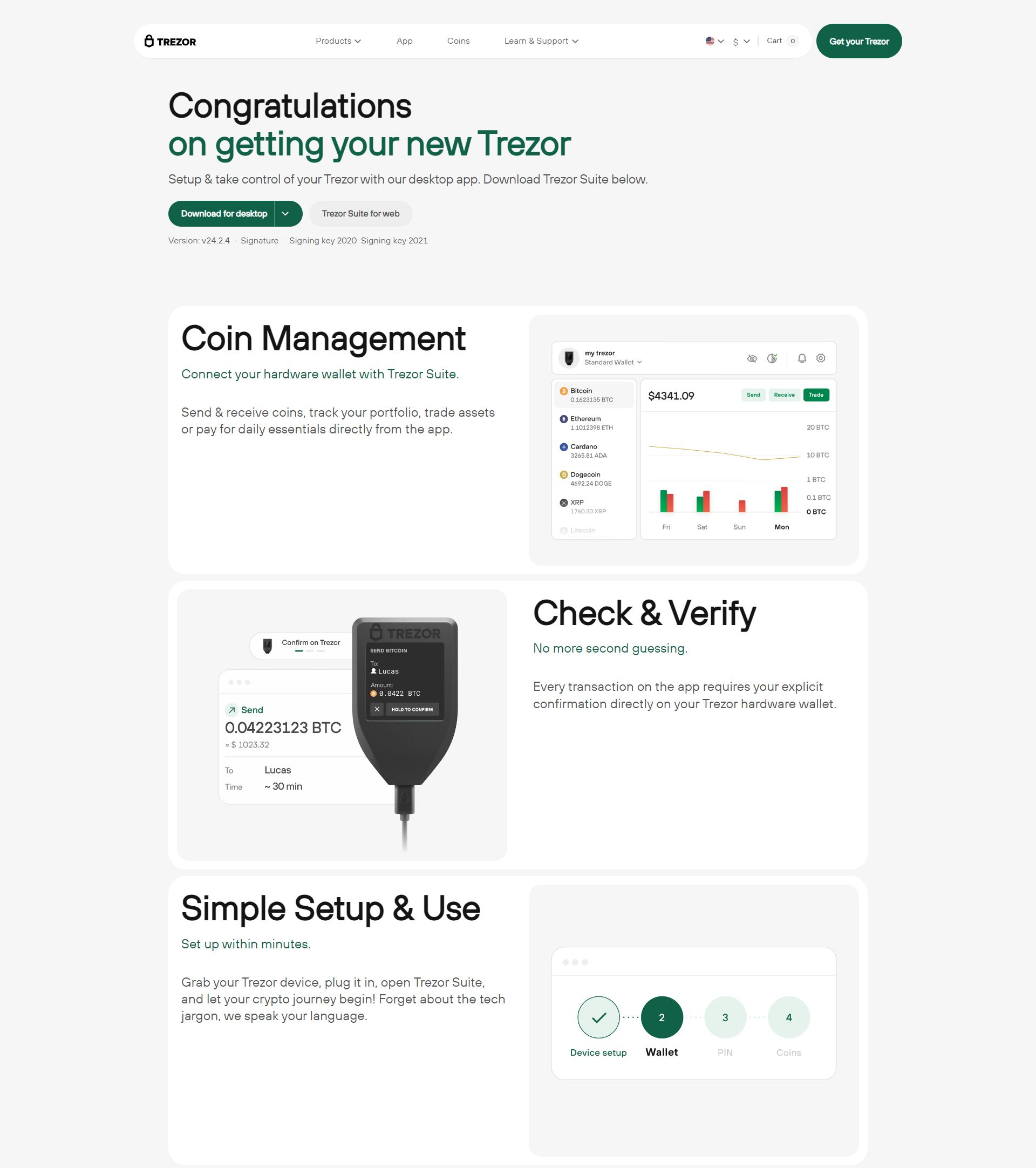Trezor Bridge: Enabling Safe, Seamless Wallet Interactions
When managing cryptocurrency with a hardware wallet, secure connectivity is just as critical as keeping your private keys offline. That’s where Trezor Bridge comes in—a lightweight, powerful tool that silently powers all communication between your Trezor device and your computer.
Whether you're accessing your portfolio via Trezor Suite or confirming a transaction in your browser, Trezor Bridge ensures smooth, safe, and encrypted interactions. This article covers everything you need to know—from what it is and how it works, to why it's essential for any Trezor user.
🌉 What Is Trezor Bridge? A Simple Explanation
Trezor Bridge is a software utility developed by SatoshiLabs that acts as a secure communication layer between your Trezor hardware wallet and your browser-based interface or desktop suite.
While it operates quietly in the background, its role is critical. Without it, your Trezor device may not be detected by your browser, limiting your ability to access your crypto accounts, sign messages, or complete transactions.
In short: 🛡️ Trezor Bridge = Safe communication between your wallet and your computer.
🔧 Why You Need Trezor Bridge Installed
Trezor Bridge is necessary for your wallet to function properly in certain environments. Even though some browsers support WebUSB, that method can be less reliable and more prone to errors. Trezor Bridge eliminates those issues by providing:
- Stable device recognition
- Secure data transfer
- Improved browser compatibility
- Real-time wallet sync and interaction
Without Bridge, your computer might fail to interact with your Trezor, especially in browsers like Firefox or Brave.
🚀 Fast and Easy Setup Guide for Trezor Bridge
Setting up Trezor Bridge is quick and secure. Here’s how:
- Go to the official start page: https://trezor.io/start
- Select your device: Choose Trezor Model One or Model T
- Download Trezor Bridge for your OS (Windows, macOS, or Linux)
- Install the application and follow the prompts
- Restart your browser
- Connect your Trezor device and access Trezor Suite
That’s it! Once installed, Bridge works silently in the background whenever you plug in your Trezor.
💻 Trezor Bridge System Requirements and Browser Support
Trezor Bridge works with most modern operating systems and browsers:
Supported Operating Systems:
- Windows 10 and newer
- macOS 10.11 or later
- Popular Linux distros (Ubuntu, Debian, Fedora)
Compatible Browsers:
- Google Chrome
- Mozilla Firefox
- Brave
- Microsoft Edge (Chromium version)
⚠️ Not supported: Safari and Internet Explorer. If you're using Safari, consider switching to Chrome or using the desktop version of Trezor Suite.
🔐 How Trezor Bridge Keeps Your Data Secure
Trezor Bridge is designed with security and privacy at its core. It never stores sensitive data or interacts with third-party services. Here’s how it keeps your wallet safe:
- Private keys remain on your Trezor device at all times
- All transactions must be confirmed physically on your Trezor
- End-to-end encryption ensures data integrity
- No information is shared externally—everything stays local to your machine
💡 Trezor Bridge simply enables communication; it doesn’t hold, view, or transmit your personal information.
⚖️ Trezor Bridge vs. WebUSB: Which Should You Use?
While WebUSB allows Trezor devices to connect to browsers without any installation, it comes with certain drawbacks:
FeatureWebUSBTrezor BridgeSetupNo installQuick installBrowser compatibilityLimitedBroad supportReliabilityInconsistentHighExtension conflictsCommonRareRecommended by Trezor❌✅ Yes
For long-term, secure use, Trezor Bridge is the preferred method, especially on Firefox and Brave browsers, or on systems with privacy extensions installed.
🔄 Updating and Maintaining Trezor Bridge
Trezor Bridge does not update automatically, but you’ll be prompted when a new version is available. To update:
- Visit trezor.io/start
- Download the latest version
- Run the installer
- Restart your browser
Keeping Bridge updated ensures maximum compatibility with Trezor Suite and new features.
🛠️ Troubleshooting Common Trezor Bridge Issues
If your Trezor wallet isn’t being recognized or communication fails, here are some quick solutions:
- Restart your browser
- Reconnect your Trezor device
- Try another USB port or cable
- Disable browser extensions like ad blockers temporarily
- Reinstall Trezor Bridge from the official site
- Check system permissions if you’re using Linux/macOS
Still stuck? Visit the Trezor support center for step-by-step help: https://trezor.io/support
📦 What Happens in the Background? Trezor Bridge Explained Simply
Here’s a simplified look at how Trezor Bridge works:
- You plug in your Trezor wallet
- Trezor Suite checks for Trezor Bridge
- Bridge detects your device and initiates a secure local connection
- Any action you take in the interface is sent through Bridge to your device
- You confirm transactions manually on your device
- Bridge transmits confirmation back to the interface
This entire process is instant, secure, and fully local, ensuring your wallet stays in your control.
✅ Final Thoughts: Trezor Bridge Is Essential for Secure Access
While it works silently in the background, Trezor Bridge is absolutely essential for reliable wallet operation, especially if you use a browser interface. It strengthens your device’s connectivity, provides cross-platform stability, and enhances your overall crypto experience.
Here’s why every Trezor user should use Bridge:
- 🛡️ Safe and encrypted communication
- 🔄 Reliable device detection across systems
- 🔌 Improved compatibility with major browsers
- ✅ Required for full Trezor Suite functionality
- 🧠 No data collected, stored, or shared
🔗 Want the smoothest and safest crypto experience? 👉 Download and install Trezor Bridge now at trezor.io/start
Made in Typedream
